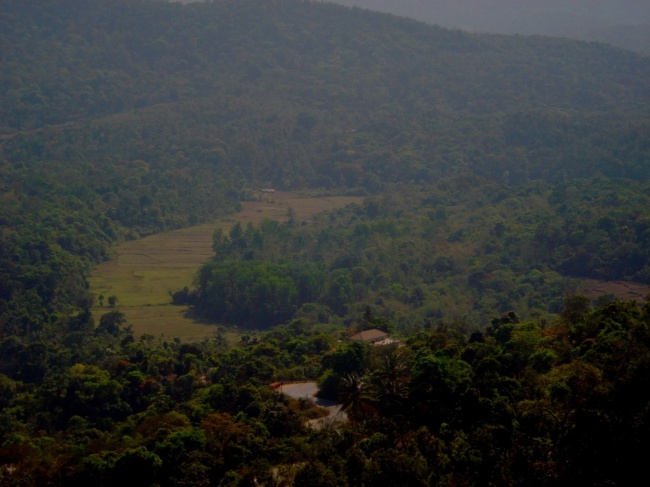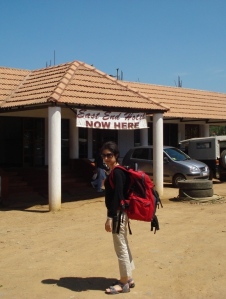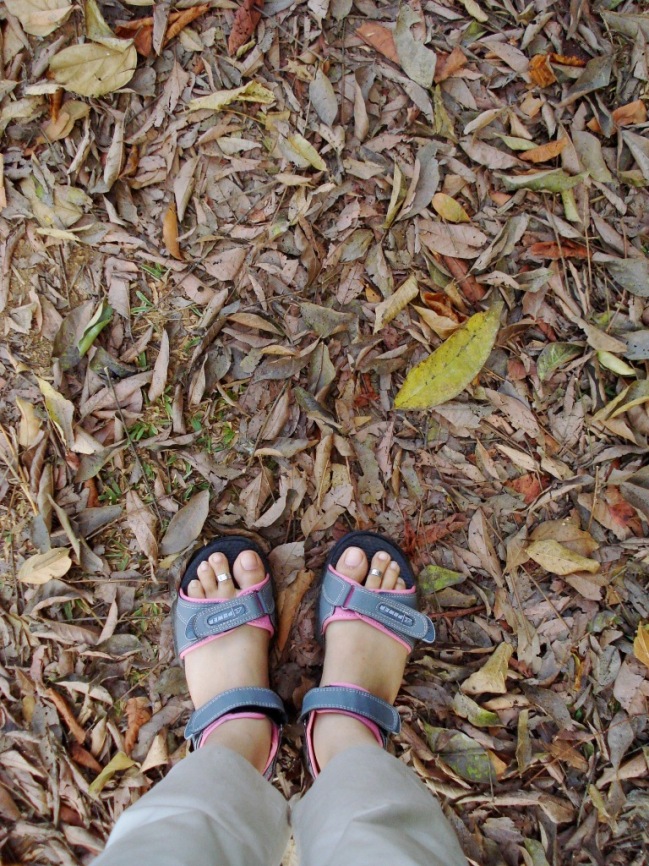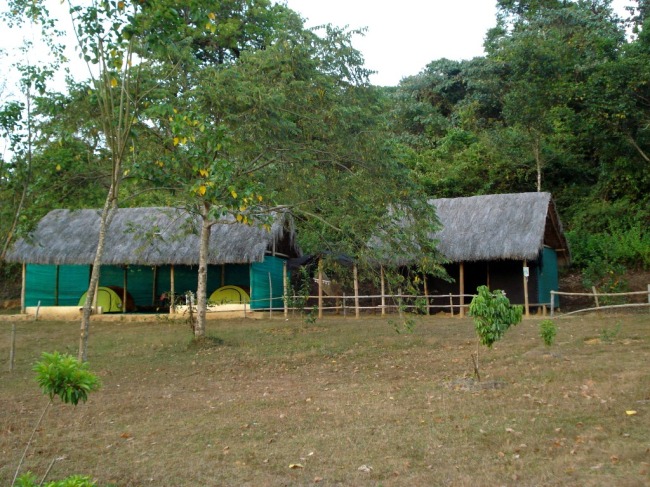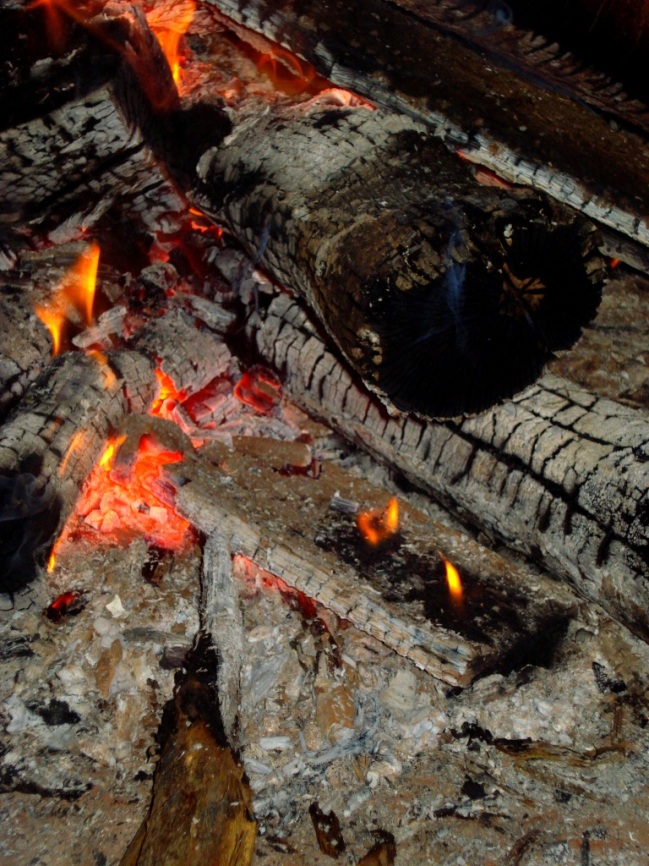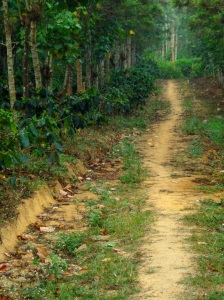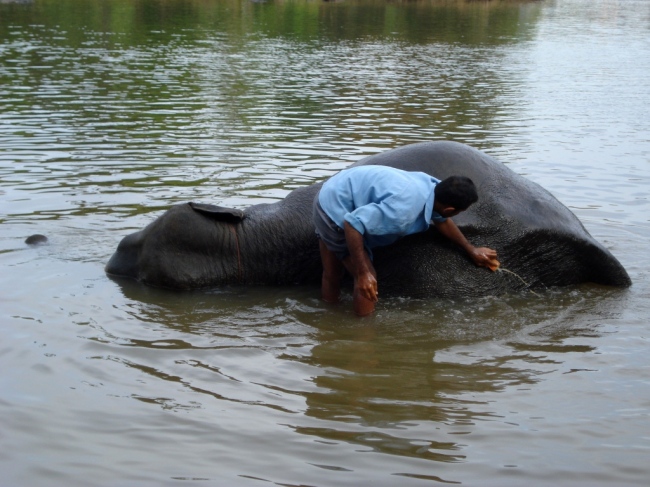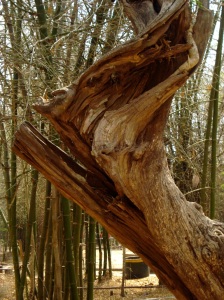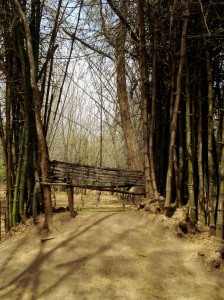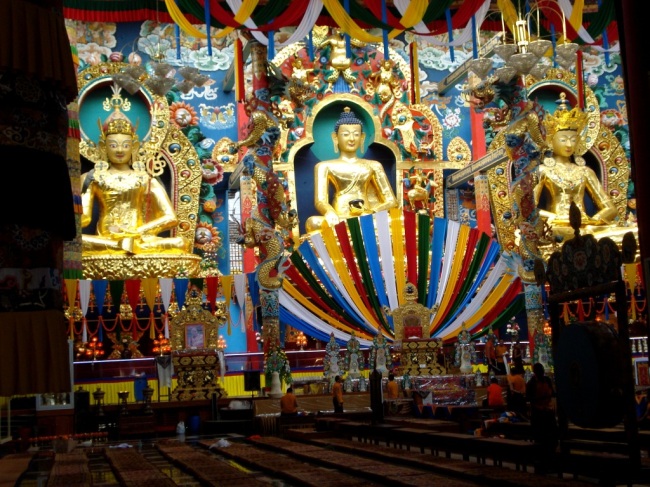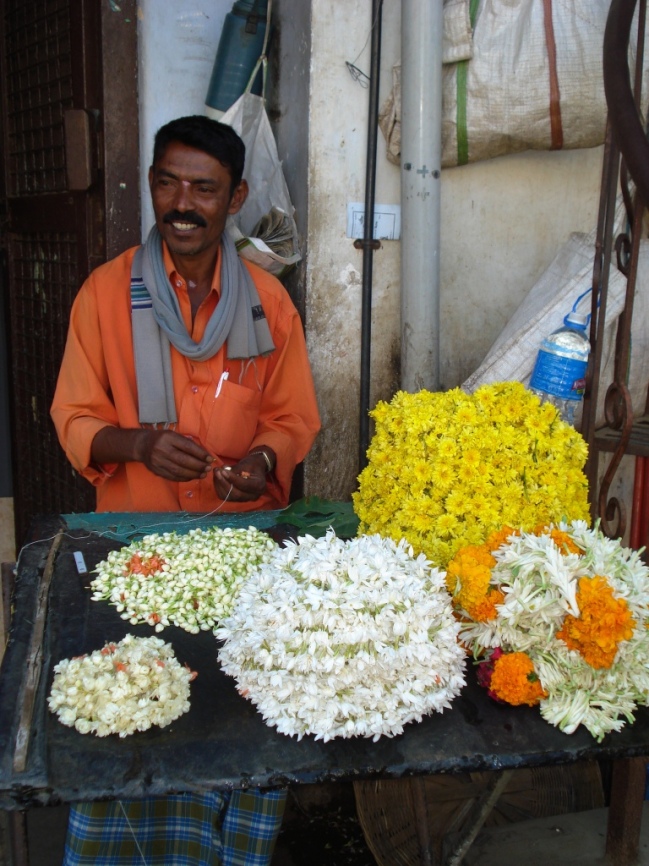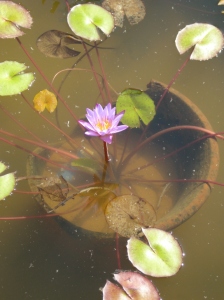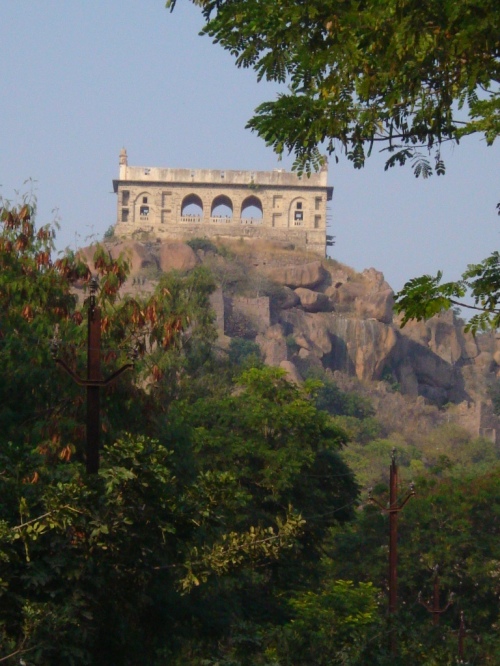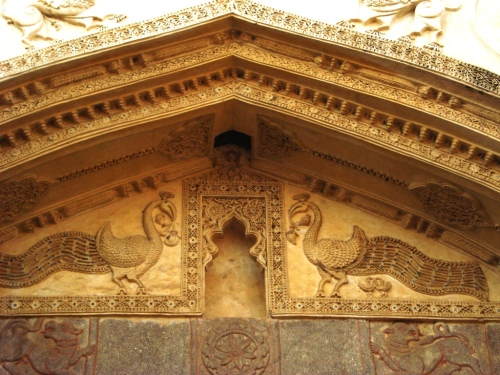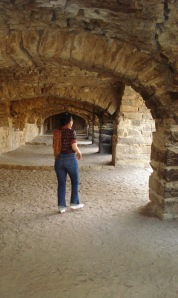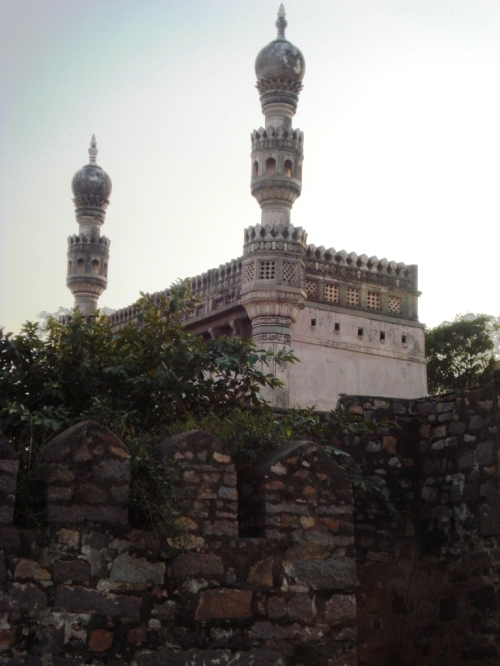What you know, is not how you know it… When a place you want to visit has numerous names, where does that leave you? In no man’s land. Kodava? Kodagu? Madikeri, of course also known as Mercara?! Or Coorg as I knew it? What is it with this name changing business that does so well in India? While figuring out the homestays and the best way to get there, I was surprised to be unable to find a direct train or a bus online, because even Coorg as a name did not find its place there or with the tour operators. Now that’s not how I like my pre-trip excitement to be treated.
After much digging and wowing over the cozy homestays offered by this lush green town, a friend from Bangalore recommended a camp stay, a tropical getaway in the heart of coffee plantations and misty hills – the Civet Creek Camp. You bet, she knew how to get there. So we booked a KSRTC Volvo bus (at one of the counters in Bangalore) that would take us to Madikeri in Kodagu (aka Coorg). Great, we had a name to the destination now. A pick up service to the camp was available from there. Now, is exactly the moment you would see me smiling to myself. Just knowing how to get to a new place is half the work done. Oh please don’t grunt! I’ve just started travelling, and a take-it-as-it-comes mindset will need a few more journeys. Much to my happiness, I couldn’t wait to set foot on what is famously known as the Scotland of India.
Before we get going… Coorg or Kodagu, originally called Kodaimalenadu (try getting that right) means a ‘dense forest on a steep hill’. It fashionably lives upto being the small town. It’s where children still walk miles to school, where they wave at most tourists, where its still heyday for the vernacular, where they do not beware of strangers, where you are surrounded by verdant broad shouldered hills and where, the moment you try to photograph it, it turns nondescript. Coorg is simply an experience.
Getting there… They may refer to it as Kodagu, but I shall call it Coorg. So my friend and I catch the early morning Volvo bus, which is the ideal and most economical way to get there. You could alternatively also hire a cab, which would be a tad expensive, since they have a package for 2-3 nights, but then, they are completely at your disposal. And if you’re a true traveller, you would rather do this roadtrip yourself. Sigh! We girls didn’t have that option. So at the bus station, we head straight to catch the local South Indian fare at six in the morning. Perfect way to break the morning. I get the window seat because I decided to do the trip (wicked smile). Not really. Since my friend had already been to the camp before, she was generous enough to offer. Her revisit was building up my expectations of the place. Undulating smooth roads, sunlight peeping in from bamboo thickets and orange groves, one coffee plantation after the other, my journey was doing its best to keep me happy. There were many points that urged me to stop the bus and get a whiff of the lush and quaint surroundings. Disadvantage number one of taking a bus. My eagerness to soak in every experience gradually weaned to head-lolling for the rest of the journey.
Wake up! We’re there…! We hit Madikeri around noon. A busy little town with a lot of tourists was not exactly how my mind had pictured it. Wasn’t Coorg a relatively silent, far-away place, with unusual birds and coffee planters? I decided to hold my horses and my stiff upper-lip for the moment. And we decide to treat ourselves to Coorgi food. The best way to begin a relationship with a new place – its cuisine. We took an auto to the East End Hotel near the main market road.
A simple, busy place with balcony seating for sumptuous views (which obviously had to be taken). We were not in the mood to experiment with our hunger, so on the table came spicy mutton curry with rice. I have to urge you to experiment here because not only for the first time in years did I give in to the temptation of eating with my hands, but to shameless finger-licking as well. Suddenly I felt very Indian. My friend trying to read that expression my face. The menu has a lot to offer at pocket friendly rates. I love to instantly fall in love with these nooks and corners of a town. It was nice to have made a beginning with oodles of satisfaction.
Raja Seat – a disgrace to royalty… Since the camp was tucked away from the madness of the town, we were advised to go check out Raja Seat. The place truly offers a view for a sunrise or a sunset, but invites too much of a crowd to nullify its own silent splendour. As the name suggests, it was a royal seat for the Rajas to come and enjoy nature’s bounty.
But the place is such a mishmash of manicured lawns, a deserted local train station with no ticket counters or passengers – or even a train for that matter, shops selling snacks and in the middle of it all, is the Raja’s Seat. Not in my mind the best way to preserve an imperial view. So what happens to places like these? They become quintessential tourist spots, with really nothing much to offer and also become infamous getaways for young couples in love. Lesson: How to corrupt an esrtwhile era. I decided to treat my disgust with an ice cream. There was no booking counter or helpdesk to figure out the schedule for the train ride. I write off the place from my mind and the reason why I write about it is, as a warning – ‘a complete waste of time’. You may choose to do a sunset if you’re that desperate.
“Personal attention” – tops my list of favourites… Perhaps there was a shortage of cabs that day, so the camp owner sent their car instead. It’s a small car loaded with boxes in the rear and all I can smell is food. The driver tells us that most of the food gets prepared at the owner’s residence and is transported to the camp everyday. At the sound of ‘home-made’, I am tempted to dip my finger into those tiffins in spite of just stuffing myself with the awesome mutton curry. Not only does this score extremely high on my list, but gets me eager to see what lies ahead.
The Camp – curiosity meets its venue… When I said tucked in, it meant a good 45 minutes drive to the camp from the centre point, Madikeri. And god spare those who can’t travel light, because cars do not go upto the site. You need to walk through a dense pathway of around 200 meters to get there. And, you walk wide eyed hoping not to step upon a snake or any other unknown stranger in their territory. For the life of me, I cannot imagine crossing this patch in darkness. But at the same time, the place lives upto its promise of giving the extra to the ordinary.
The owner himself waits to greet us (nice). He seemed the type to run this place for passion than for tourists. My eyes, soaking in everything in a fraction of a second, like it happens every time at a new place. You want to gulp it all at once. A few huts with tents inside them outline a huge open area on one side, coffee beans spread out in flat patches on the ground to dry, a trampoline and rope-walking arrangement, a semi covered dining area on the other, and, where are the toilets? The most finicky things first. With my backpack very much on my back, I march off to an area behind the huts where I find a few pairs of washrooms and bathrooms. Disappointed. The separation doesn’t work well with my digestive system. But they’re clean, no showers, and no lights too! The idea is to conserve. Hot water comes from an earthen natural geyser made of wood logs, adjacent to every bathroom. But for someone who likes to spend time in there, the smoke can be a bit interfering. As for the lights, there are lamps.
It’s already dark by the time we showered and exploring the surroundings had to wait till the morning. A perfect nip in the air welcomes us to the bonfire area – an open patch of land, encircled with tree trunk stools with a bonfire in the middle and a veil of stars above. While we waited for our chicken tikkas (the place only gets better with its service), whoever walked in saw both of us heads up – staring at the night sky. I do not have any recollection of seeing so many stars ever before. It went beyond being just beautiful. Majestic was the word. The sizzling chicken tikkas brought our heads down while we engaged in knowing more about the place with the owner. The silence was a bit eerie at first and we hoped for the other guests to join in, but it remained just us. As the night descended its chilly notes, the native sounds of the hills brushed past our ears. The crackling of the fire, the veil of stars above, the occasional sound of an animal, even the sound of a leaf being blown away make you realize how much of this do we miss, in the din of the city life. This was clearly a moment in time.
Wake up and smell the coffee… A feeling that can never be replicated in a city. You sleep like you’ve never slept before. You’re fresh as a daisy. You’re eager to meet your neighbours. And then you do the obvious. Take your camera and head off to the coffee estate. For someone who hasn’t been lured by the aroma of coffee till date (Fine! I prefer tea!), my curiosity to know everything about ‘the bean’ was surprising.
There are essentially two methods of harvesting the coffee fruit – either carefully picking by hand or by shaking the tree and stripping the fruit. In India, the latter method is predominantly used. And please do realize you do not really smell coffee in a coffee plantation. The flavour and the enchanting smell come only after the roasting. Coorg produces some of the best Robusta coffee in the world.
Around Coorg… We quickly go and get ready to explore all that Coorg has to offer since this is the only day we have. We do not care much for breakfast and we’re off to an exciting journey of discovering Coorg.
Dubare – the elephant camp… Yes of course, every tourist in Coorg comes to Dubare. And each one of us makes a fool out of oneself by attempting to bathe the elephants – in the process, get bathed ourselves. Elephants are hairy and have very rough skin and are as playful as they are intimidating. No one knows when they might just change their mind.
Nisargadhama… Having bathed one set of elephants, you do not travel all the way to come to another boating and elephant-riding tourist spot. The noise and the chaos mar the beauty that Nisargadhama might have otherwise offered. The rope bridge fails to impress. The only interesting find here, was the bamboo forest (more of a garden) and the peculiar bunched way bamboos grow. I repeat, tourism must grow aesthetically, not make a circus out of places.
Nyingmapa Tibetan Monastery… At Bylekuppe, you come across the second largest settlement outside Tibet – a monastery, a village and a small flea market of Tibetan crafts.
It is believed that if a person takes the name of Buddha Amitayu at his last stage, his life gets extended. With these learnings we walked out for a chat with a few monks and headed for some Tibetan food, which was a huge disappointment. The Tibetan market is all but a few shops with identical offerings. Bargain hard and clinch the best deal!
Madikeri Market... Busy. Unassuming. Helpful. Spiced up! Coorg has had its fair share of tourists and the market isn’t awestruck at every new face that it sees. You can buy your coffee and spices from here, or fresh from the estate sometimes, if they like you enough!
Too much to do, too little time… Bird watching, Trekking, Rafting, Angling, Shopping for spices, Talakaveri…
Colours of Coorg…
So would i cut another ticket to Coorg? I wouldn’t say that i’ve found another paradise in Coorg. Unfortunately, Coorg has started reeking of tourism, which has dampened the natural flavour of the place. But I would surely like to explore its serenity further. The coffee-picking, the twilight hours, the homestays (i’m a huge fan), the peaceful long walks, the i-know-you-a-little-better-now version, which would make it all the more worth it.








